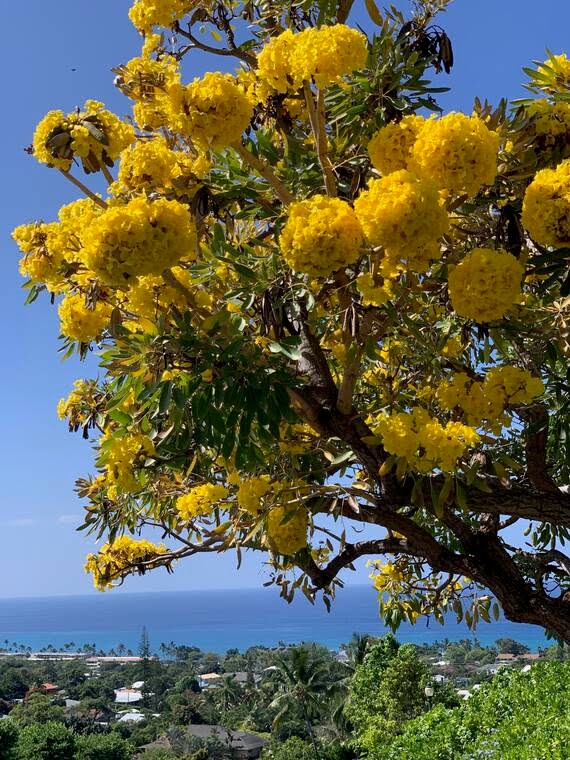Cloud forests, also known as tropical montane forests, are truly remarkable and enchanting ecosystems found in high-altitude regions of tropical and subtropical areas. What sets these forests apart is the ever-present mist or clouds that embrace the lush canopy and understory, creating an otherworldly atmosphere. Within these mystical realms, a diverse array of plants and animals thrive, making cloud forests a hotbed of biodiversity. In this blog post, we will embark on an awe-inspiring journey to discover the wonders of cloud forests, explore their fascinating flora and fauna, and understand why protecting them is of utmost importance for our planet.
Introduction to Cloud Forests
Nestled at elevations ranging from 2,000 to 3,000 meters (6,500 to 10,000 feet) above sea level, cloud forests possess a rare beauty that captivates all who venture into their depths. The high altitude results in cooler temperatures compared to lowland tropical forests. This, coupled with the constant presence of clouds or mist, creates a uniquely moist and temperate environment. These factors offer an ideal habitat for a wide range of plant and animal species, each uniquely adapted to thrive in this challenging setting.
The Flora of Cloud Forests
The flora of cloud forests boast ingenious adaptations that allow them to thrive in this ethereal environment. One of the most remarkable features is the abundance of epiphytic plants, such as orchids, bromeliads, and ferns, which grow on tree branches without harming the host tree. These epiphytes draw moisture and nutrients from the air and rain, showcasing a remarkable survival strategy.
The dense understory of cloud forests is a tapestry of various ferns, mosses, and flowering plants, each contributing to the forest’s intricate web of life. Some of these plants have developed unique defense mechanisms to protect themselves from herbivores, while others rely on specific pollinators for reproduction. The stratification of plants at different heights creates microhabitats within the forest, providing a rich array of resources for diverse animal species.
The Fauna of Cloud Forests
Cloud forests are a haven for captivating animal species, some of which are found nowhere else on Earth. Among the most notable inhabitants are the elusive clouded leopards, known for their stunning coat patterns and secretive nature. Another iconic resident is the resplendent quetzal, a brilliantly colored bird revered by ancient civilizations for its beauty.
In addition to these flagship species, cloud forests support an astounding diversity of insects, amphibians, and reptiles. Each creature plays a crucial role in the delicate ecological balance, making these forests a treasure trove of life.
Threats to Wildlife
Unfortunately, cloud forests and their inhabitants face an array of threats that put their survival at risk. Deforestation, driven by logging and agriculture, is a major concern that results in the loss of critical habitat for many species. Additionally, climate change poses challenges as it can alter cloud cover and disrupt the forest’s delicate microclimate.
Illegal poaching and wildlife trade also add to the pressures on vulnerable animal populations. Protecting these unique creatures and their habitats is paramount to preserving the ecological richness of cloud forests.
Conservation Efforts
Recognizing the ecological importance of cloud forests, conservation organizations and local communities are working tirelessly to protect these precious ecosystems. Establishing protected areas, such as national parks and reserves, is a key strategy to safeguard cloud forests and their biodiversity.
Engaging local communities in conservation initiatives is vital to ensuring the long-term success of these efforts. By involving people who live in or around cloud forest areas, it becomes possible to strike a balance between conservation and sustainable livelihoods. The high level of biodiversity in cloud forests plays a fundamental role in maintaining ecological balance and providing vital ecosystem services.
Habitat for Endangered Species
Cloud forests provide essential refuge for numerous endangered plant and animal species. Preserving these habitats is crucial to prevent species extinction and protect the unique genetic diversity found within these populations.
Climate Regulation and Carbon Sequestration
The presence of cloud cover in these forests plays a crucial role in regulating local climates. The moisture intercepted by the canopy drips down as rain, contributing to a steady flow of water in rivers and streams downstream. This is vital for supporting both wildlife and human communities in the region.
Moreover, cloud forests act as important carbon sinks, sequestering carbon dioxide from the atmosphere and helping to mitigate the impacts of climate change.
Conservation and Sustainable Practices
Effective conservation strategies involve the establishment and maintenance of protected areas, coupled with sustainable land-use practices. Encouraging agroforestry and eco-tourism can provide economic incentives for local communities while ensuring the long-term preservation of cloud forests.
Raising public awareness about the importance of cloud forests and their conservation is paramount. Education programs, outreach campaigns, and ecotourism can help foster a sense of responsibility and stewardship for these precious ecosystems.
Cloud Forests Around the World: Enchanting Locations of Natural Beauty
Cloud forests are scattered across several regions of the world, each offering a unique and enchanting experience for nature enthusiasts and explorers. These misty and mystical habitats are found in various countries, showcasing the incredible diversity of life that thrives in their high-altitude environments. Here are some captivating locations where you can immerse yourself in the beauty of cloud forests:
Monteverde Cloud Forest Reserve, Costa Rica:
Located in the rugged mountains of Costa Rica, the Monteverde Cloud Forest Reserve is one of the most famous cloud forest destinations on the planet. The reserve is a paradise for birdwatchers, harboring over 400 bird species, including the resplendent quetzal. Visitors can explore well-maintained trails that wind through the forest canopy, offering breathtaking views of the mist-shrouded landscape.
Maquipucuna Cloud Forest, Ecuador:
Nestled in the western slopes of the Andes in Ecuador, the Maquipucuna Cloud Forest Reserve is a haven for biodiversity. The lush vegetation houses an array of plant and animal species, including the endangered spectacled bear. Visitors can partake in guided hikes and experience the tranquility of this pristine cloud forest.
Bwindi Impenetrable Forest, Uganda:
Home to the critically endangered mountain gorillas, Bwindi Impenetrable Forest is a UNESCO World Heritage Site located in southwestern Uganda. This unique forested ecosystem, often shrouded in mist, offers an unforgettable experience for those who trek through its dense vegetation in search of these magnificent primates.
Knuckles Mountain Range, Sri Lanka:
The Knuckles Mountain Range in Sri Lanka is a lesser-known gem of cloud forest beauty. With its misty peaks and diverse flora and fauna, the range is a trekker’s paradise. The landscape is dotted with picturesque waterfalls and offers breathtaking panoramic views of the surrounding valleys.
Mount Kinabalu, Malaysia:
Rising majestically in Borneo, Malaysia, Mount Kinabalu is not only Southeast Asia’s highest peak but also a thriving cloud forest ecosystem. The summit is often blanketed in clouds, creating an ethereal atmosphere. The mountain is renowned for its diverse plant life, including the iconic Nepenthes pitcher plants.
Kakamega Forest, Kenya:
Located in western Kenya, Kakamega Forest is a unique remnant of the ancient Guineo-Congolian rainforest. It is considered one of the last vestiges of the once-vast tropical rainforests that covered Africa. The forest’s misty atmosphere creates an ideal environment for a rich diversity of birdlife and primate species.
Huangshan (Yellow Mountain), China:
Huangshan, also known as the Yellow Mountain, is a UNESCO World Heritage Site located in Anhui Province, China. Renowned for its stunning scenery and mystical cloud formations, this mountain range has been a subject of inspiration for traditional Chinese paintings and literature for centuries.
Santa Elena Cloud Forest Reserve, Peru:
Nestled in the Peruvian Andes, the Santa Elena Cloud Forest Reserve is another captivating cloud forest destination. The region is home to a plethora of orchids and hummingbirds, adding to the allure of the mist-shrouded landscape.
Cusuco National Park, Honduras:
In the rugged mountains of Honduras, Cusuco National Park offers a treasure trove of biodiversity. With its montane cloud forests, the park hosts an array of unique wildlife, including the splendid quetzal and several endemic amphibian species.
Kona Cloud Forest, Hawaii, USA:
On the stunning island of Hawaii, the Kona Cloud Forest is a hidden gem awaiting discovery. Situated at a high elevation on the slopes of Mount Hualalai, this cloud forest offers a mesmerizing mix of native Hawaiian plants and rare species not found anywhere else on the planet. The cool, misty environment creates an oasis of biodiversity, where visitors can witness endemic birds, such as the ‘i’iwi and apapane, flitting through the branches of ancient trees.
As you journey through the Kona Cloud Forest and other cloud forest locations around the world, remember the importance of responsible ecotourism and conservation efforts to preserve these delicate ecosystems for future generations. The allure of cloud forests lies not only in their mystical beauty but also in the vital role they play in sustaining biodiversity and contributing to our planet’s ecological balance.
These are just a few examples of the stunning locations where cloud forests flourish. Each destination offers a chance to immerse oneself in the wonder of these misty realms, with their unique ecosystems, captivating flora, and elusive fauna. As you embark on your journey to explore these enchanting locations, remember the importance of responsible ecotourism and conservation efforts to ensure the preservation of these delicate ecosystems for generations to come.
Final Thoughts
Cloud forests are wondrous and biodiverse ecosystems that captivate us with their beauty and ecological importance. As stewards of our planet, it is our responsibility to protect and preserve these magical realms for generations to come. By understanding the significance of cloud forests and supporting conservation efforts, we can ensure that these misty and mystical habitats continue to thrive, providing a home to unique flora and fauna and playing a vital role in sustaining life on Earth. Let us join hands in cherishing and safeguarding these jewels of biodiversity.








